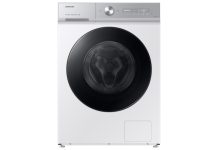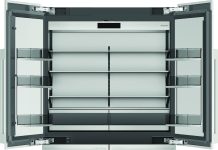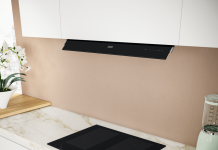The mechatronics term derives from the merging of mechanics and electronics. In other words, technologies and products increasingly integrate electronics into mechanisms, an intimate and organic fusion that will make defining where one ends and the other starts more and more impossible.
The progress idea implies a synthesis between experience and knowledge, gained in the past, with a forecast of what it will be possible to implement in the future, no matter how next or distant it can be. History does not rely on organizational autonomous powers and consequently progress has nothing automatic, it is nothing but the product of human enterprises, sometimes subjected to the possibility of involutions and of failure, always dominated by uncertainty and by fear. However, this has never constituted either a hindrance to entrepreneurship or a reason for giving up speculation in its noblest meaning of investigation. This is proven by the deep interactions among deeply different disciplines that have led us to have new basic composite materials, innovative applications born from different worlds, greener and economically more profitable processes than in the past.
The mutualistic symbiosis, born at the level of the various disciplines, which has led to the discovery of new materials, exists also at technological level, like in the case of mechatronics.
Mechatronics is an evolutionary and not a revolutionary process, an all-encompassing definition does not exist… and actually it is not useful. The number of new products developed at the intersection of the traditional disciplines of engineering, information technology and natural sciences is steeply rising. The new developments in these traditional disciplines are absorbed in the mechatronic design at an ever-growing rate. The endless revolution of the information technology, the progresses in the wireless communication, the design of smart sensors (due to MEMS technology) and the engineering of embedded systems grant that the mechatronic engineering paradigm will go on evolving more and more remarkably.

Opposite visions on mechatronics
“A reality to be still developed fully” is the judgement given about mechatronics by companies that have already drawn on it and that, having understood its benefits, would like its higher development. “A world to be explored with caution” is on the contrary the sensation of a minority that has not yet experienced potentialities and advantages first-hand, of those who, being afraid of losing the ranking gained due to their know-how, look suspiciously at all that is not purely mechanical. In both cases, mechatronics is nowadays a concrete multidisciplinary reality and consolidated under many respects. Looking at it with suspicion is like living in a mythicized past, looking at it with the will of knowing, of trying the potentialities that just innovation can give, means living the present, the only time that has a value. As already said, mechatronics bases its strength on the synergistic integration of mechanical and electronic design, with the latter unavoidably constituted by a variable mix of hardware and software.
The study of mechatronic systems can be subdivided into various specialization areas:
1. Modelling of physical systems
2. Sensors and actuators
3. Signals and data acquisition
4. Computer and software
Hand in hand with the evolution of the mechatronics field, the list of the relevant associated topics expands and grows; a mechatronic system is not only a matching of electric, electronic and mechanical systems, it goes beyond a simple control system: it is a complete integration of the whole.
To satisfy the technological requirements of this evolutionary course, it is necessary that the various enterprises involved agree and implement a wide-ranging collaboration.
In particular, while some companies have already reached a knowledge and expertise level that already enable them to think of and to design in mechatronic terms, others are still very uncertain about how to behave and others have surpassed the threshold, but they are only at experimental level.
The main boost towards innovation finds its reasons in the market’s demands but also the need of obtaining a constant improvement of manufacturing process efficiency and of the cost reduction is determinant.
The comparison between the current situation and the one that can be hypothesized in a medium-long term highlights the technological requirements, in other words the scenario of technologies that enterprises deem essential to achieve a cutting-edge and of those judged strategic to go on existing.
A scenario in progress
More and more often, starting from the next future, the skills in using and integrating technologies concerning manifold engineering areas will be winning: science of materials, mechanical and chemical, electronic and information engineering.
The standard development methodology of mechatronic systems provides for the execution of a series of phases, such as for instance the mechanical design, the choice of
sensors and of actuators and of the relative control electronics, the fast implementation of a physical prototype through 3D printing, expected to have particular electromechanical properties permitting the fast execution of the necessary tests for the device optimization.
According to a traditional design line, in the last phase the negative effects of wrong, or anyway non optimal choices, emerge. The mechatronic design prospect needs instead that all various aspects that share in the product implementation, in all of its details, are faced contextually, in the research of those solutions that can optimize the design in its globality.
The availability of new technologies in terms of components, materials, CAE, virtual prototyping, MID (moulded interconnect device) and 3D printing are of invaluable aid in this technological upgrading process.
“Smart” materials
The growth of mechatronic systems is fed by the evolution of its constitutive areas; the progresses in the various disciplines drive the growth of mechatronic systems, providing the enabling technologies such as, for instance, the one of smart materials. Intelligent materials are carriers of intrinsic properties that change if subjected to external stresses, find application in numerous sectors, including the world of smart household appliances. When the change of properties produces deformation, displacement or force and stress, it is possible to develop specific sensors and actuators.
An example of smart materials is given by piezoelectric, by shape memory and magnetic shape memory alloys, by electroactive and magnetoactive polymers, by magnetostrictive materials, by magnetic fluids and by electric fluids. One of the main advantages deriving from the use of these properties is the high positioning resolution (sometimes in the scale of nanometres) that allows their use in applications that need a high precision.
They are not easily manageable because they show strong non-straightness caused by complex behaviours, feature of these materials.
The operation principles of some mechatronic actuators are not standard, therefore their modelling and control are very specific, such as for instance stick-slip, inch-worm, dual-stage, hybrid actuation.
We speak of stick-slip in the case of the movement of two surfaces, one versus the other, which proceeds with a series of jolts caused by the alternation of friction and sliding, with the latter taking place when the friction is won by an applied force.
Inch-worm is more complex, to give an idea of how this actuator works let us think of how a green caterpillar proceeds: it holds itself with its front legs, arches its body and drags its rear end forward; then, it advances with the front section, holding on with its front legs. Similarly, a piezo gripper grips the object, a second piezo extends pushing the first gripper so as to cause the object to slide forward, while a second piezo gripper is open. The second piezo gripper closes on the object, the piezo that has caused the sliding relaxes while the first gripper simultaneously opens. The alternation of these activities provokes the sliding of the object, obviously by few microns at a time.
However, not everything is simple, the mechatronic structures based on smart materials sometimes issue exacting challenges in terms of control, in particular owing to the lack of suitable sensors.



